A fruit basket in the cafeteria won't get you there. Three pillars need to be balanced: bricks, bytes and behavior.
Looking at the employee and the organization they work for every day in a completely new way is necessary. You cannot apply the same way of working in a system of 2 or 3 days in the office as in the former system of 5 days in the office. On the contrary, you have to adapt your approach to the hybrid reality. In concrete terms: how can you connect the physical world of work with the digital world in such a way that they reinforce each other? This involves more than plug-and-play. A fruit basket in the cafeteria won't get you there. In the employee's experience - regardless of place or time - three pillars must be in balance: bricks, bytes and behaviour. There is no point in reducing the number of desks by half if you don't opt for a new kind of working and ditto technology.
Of all employees
90%want flexibility over where and when they work.
If they don't get that flexibility
54%are considering resigning. Among millennials, that number is double that of baby boomers.
2. Is measuring knowing or controlling?
This new way of working means more flexibility and free choice for the individual employee. The global pandemic proved that productivity does not decrease with telework, yet many managers struggle with a perceived lack of control. The needs of the home worker do not always parallel those of the organization. And let's face it, some tasks are still best done in the office, especially if they involve a lot of interaction. To achieve this delicate balancing act, organizations must link individual flexibility to a collective goal. You can anchor those together with practical arrangements in a joint charter. That offers companies a unique opportunity to opt for a more people-oriented approach with, for example, flexible remuneration and personalized communication. A crucial role is played by the team leader, who must realize that their team consists of different personas, types of profiles with their own expectations, needs and motives.
Hybrid working is only useful if you can rely on the autonomy of your employees. Numerous studies have shown that their satisfaction and happiness then increase. That is not only positive for the employee, but also for the entire organization. But admittedly, there is still a lot of mistrust. This can be overcome by checking-in daily, for example by calling. However, that type of control is at odds with the autonomy of the employee. Moreover, employees must be given room to make mistakes.
The monitoring of employees by their manager must therefore not focus on productivity but rather on the commitment and well-being of the employee. This can be measured with an extensive annual engagement survey but even better is to opt for a kind of customer experience: a diverse palette of measuring points that can be an indicator, for example a pulse survey that the employee can answer intuitively. Or indirect measurements such as the interaction with IT or HR. The idea is to measure employee satisfaction the same way you measure it for interactions with customers.
It is a myth that everything was fine when everyone was still physically working in the same space.
3. How does the manager manage?
Too often someone gets team responsibility because they are good at their job, because they have expertise. That doesn't always result in the most people-oriented managers. The role of the manager is to coach their employees to achieve the expected result. For some employees, this means a very directive approach. Others thrive on more possibilities for their own interpretation. In addition, managers must be a beacon for their colleagues by translating the collective goal of the organization into concrete expectations and behaviors for the team. But also by linking these to the contribution that the individual employee has to make. The secret ingredient is to respect the employee as an individual with unique talents, needs, preferences and priorities, without delving too deeply into the context of each individual. It is up to the Human Resources department to focus more on empowering the employee experience and supporting the manager, including insights from measurement and data.
If your employees understand how their work contributes to the goals and strategy of the organization, where and when someone works is of little importance.
Redesigning internal processes and tools in a more user-friendly and integrated way is an important part of the process. This can be done by mapping the employee experience, showing the typical "employee journey" through the organization. Such an employee journey anchors one’s flexibility and goes beyond the choice of where and when someone should work. If employees understand how their work contributes to the goals and strategy of the organization, where and when someone works is of little importance.
A company culture in which the employee feels at home, trusts the management and connects with the goals: that is the core of employee experience. Transparency and sharing information freely are crucial to this effect. Engaged employees are more innovative, stay with the company longer, are sick less often, and so on. Ultimately, that delivers more profit. The results of employer experience have been indisputably proven. Also, it's a myth that everything was fine when everyone still worked physically in the same room.
Positive work experiences result into
66%less absenteeism.
Positive brand perceptions by employees lead to
4.4xmore profit.
Source: Morgan, J. (2017). The employee experience advantage. How to win the war for talent.
4. Is video calling the number one skill for the hybrid employee?
Activity-based work, complete autonomy to carry out your work as you see fit, that sounds like a nice, simple principle. But then you assume that the employee knows perfectly well what to do, how to do it and that they will achieve the desired result. That's not always true.
Therefore, the most important skills for the future are not immediately digital skills, but rather dealing with change and translating it into new actions in an analytical way. An HR employee should not (only) be able to set up a large survey, but they should be able to read the results and convert them into concrete action points. Nor is a digital app the solution to every problem. You have to fit them into your necessary processes, and they have to be user-friendly. The world around us is spinning so fast that you can't implement major change processes or training programs; you have to intuitively get people to work with new technology.
Concretely, this means that as an employee, your job will be constantly adapted and also the context in which you work. If you are not satisfied with that, you have to be communicative. Millennials may be more articulate, but that fire has since spread in organizations.
Explore the Future of Work
Newsletters EY Belgium
Subscribe to one of our newsletters and stay up to date of our latest news, insights, events or more.
Summary
As a hybrid way of working is the new work reality for many, plug-and-play solutions are not sufficient. This articles dives deeper into four hot topics about the Future of Work, which is not solely focused on video calling skills.


